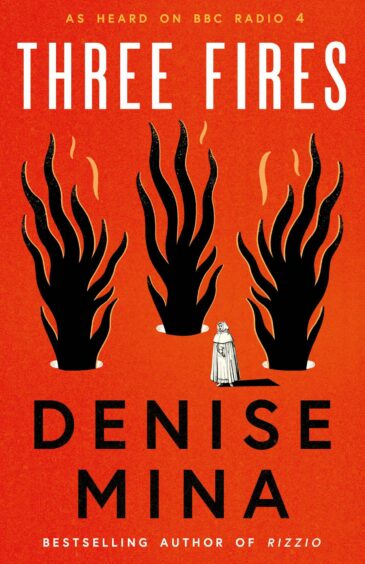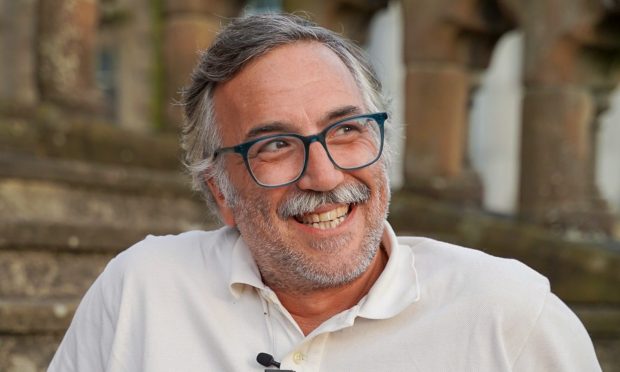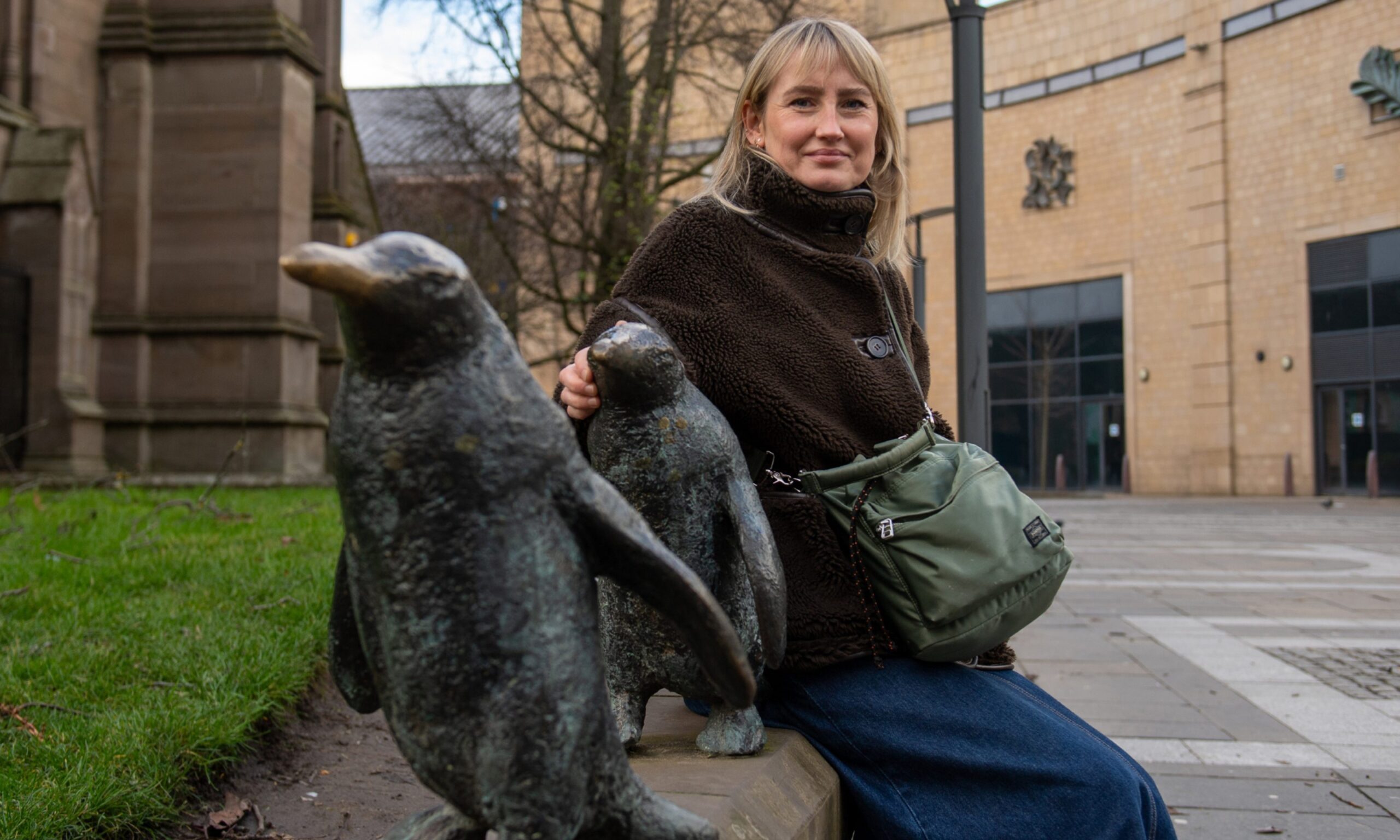Savonarola is a name familiar to scholars of the Renaissance and religious history but for many, his story has been eclipsed by more flamboyant contemporaries such as the Medici family.
Author Denise Mina has rediscovered his dramatic life and written the face-paced Three Fires, a thoroughly modern treatment of the tale of a remarkable man.
Denise Mina is best know for her award-winning Tartan Noir crime novels – but her first foray into historical fiction with Rizzio whetted her appetite for another tale set in the past.
Three Fires is presented in novella form, allowing the writer to share the story of Girolamo Savonarola, a fanatical fifteenth centaury Dominican friar, at break-neck speed.
“This book and Rizzio are supposed to be a way of telling a gigantic history in a very conflated scene by scene way,” says Denise.
Having delved into researching the life of Savonarola and discovering that many books on his life were out of print, the author then set about trying to forget much of the detail so that she could concentrate on her own storyline.
“What I wanted to do was take these really interesting historical stories and tell them with all the techniques that you use in crime fiction. I think that historical novels are very often told by historians who want to show they have done their work and they don’t want to leave anything out.
“I wanted to leave everything out and tell it in a crime fiction way, because these stories are amazing stories and quite often if you don’t feel like sitting down to a 700 page book you aren’t going to read that story. They are very instructive I think.”
Three Fires tells a historical tale in a compelling way
In contrast to traditional historical fiction, she says, “What I want to do is tell a compelling story, I don’t want to be correct, I don’t want footnotes and you don’t want to discover details that are so delicious that you can’t leave them out.”
Born in Florence, Savonarola was set to be the golden boy of his family, headed for an auspicious marriage and career in medicine. But things don’t quite pan out that way, his proposal is rebuffed and shortly afterwards he witnesses the terrible violence of a civil war in the streets of his home. He sees children being killed, women raped and other quite unimaginable horrors. Eventually he abandons his family home to dedicate his life to God.
Interestingly, in later life, Savonarola denied that he had ever contemplated marriage, as Denise explains: “Well, he had biographies written about him that were contemporaneous and he said that he had never been troubled by temptations of the flesh and he had never loved anybody. But his big brother – and this is so humanising – said, ‘no, he had a massive crush on her and asked her to marry him but she knocked him back!’
“Basically, his big brother clypes on him!,” she laughs. “He was so grandiose and he had such a strong sense of how important he was going to be that that small knock back just before that very violent civil uprising really scarred him, he just didn’t have the ego to understand it as ‘you win some you lose some’.”
Reflecting on some of the violence that Savonarola witnessed, the author was clear that she had to include these events in the book, distressing as it was to document: “What was done was so disturbing that I think you had to know what a violent background he came from and that he was probably a young depressed man watching that and what it would do to your head,” says Denise.
“It’s very hard to write about those types of things but I felt that you couldn’t just skimp over it. These were noble women that he would have admired, because he was a bit snobby and then to see them raped by gangs in the street.”
As Savonarola’s religious journey continued, he became convinced that he had been called by God to rid the church and people of corruption and sin and he was extremely successful in calling people to his cause.
Savonarola’s populist agenda
“He did that populist thing of saying some disarmingly astute things like the bankers are ripping you off and setting up a credit union, saying poor people are not evil or lazy, they are not paid properly.” says Denise. “I think that might have been the first time that anybody had really said that to lots of people.”
He also railed against what she describes as “the classic triumvirate of the women the Jews and the gays”.
“He is basically John Knox without the giggles,” she says wryly, “but John Knox was going about doing the same thing, killing people, bullying women. And also setting up great schools and freeing people from a church that is really not answering their needs.”
She feels that the two men shared the idea that: “I know better than everybody else and I won’t be told otherwise.”
There are clear historical parallels to both the rise of Nazism and other populist regimes. “It is like Isis, the Caliphate,” Denise points out, “that puritanism, it forms a very familiar cluster of characteristics.”
“So I was kind of hoping that someone would read this book and realise that – see the pattern.”
Writing about religion
Readers from a Catholic background will recognise many incidents in Three Fires as themes are still relevant today and much of the story’s humour stems from traditions such as the ideas that the Dominicans were the ‘fun monks’ or that even in the face of a trial by fire it’s always a good idea to stop for a decade of the rosary or a quick Mass.
Indeed, Denise admits that she prefers to discuss the book with people with a similar upbringing to her own, saying: “For a lot of people this will be the first introduction into the complexities of transubstantiation. Having grown up in the Catholic tradition you understand that, because that is the body of Christ, so there are implications of that.
“The traditions are still so far apart here it’s very striking.”
In contrast to Savonarola, Fra Angelico is the quintessential jolly Dominican friar. “He’s such a drama queen,” laughs Denise, “he’s who I would be. All caught in it and then thinking, ‘Oh no, I have to walk into a fire!’.
“When we were little girls we were encouraged to think ‘I could do this for my faith’ and I just totally get where he was coming from,” she explains.
“I wanted him to have a happy death. What a great wee guy, he was so loyal, and he was the reason that Savonarola’s work was disseminated.”
Wear it light says Denise Mina
Humour also punctuates her chapter titles, such as Apocalypse Then or Enchanted Underpants which were certainly born in the 21st century. “Sometimes I am just entertaining myself as I do like to write as if no one is going to read it,” Denise muses,
“And also it’s important when you are writing about very heavy stuff, it is important to remind the reader to wear it light.”
“Literature is sometimes heavy handed. We should remember that readers are reading for fun.
“If you are reading about the Renaissance or Savonarola is it very easy to feel disempowered and I want people to read it and have opinions about him and not feel as they have been spoken at.”
Alongside Three Fires, Denise Mina is also currently publicising The Second Murderer, the latest Philip Marlowe mystery. “I’m the first woman to write for the Chandler estate,” she says, matter-of-factly, “which has been quite a big deal in America.”
Three Fires by Denise Mina is available now, £10.













